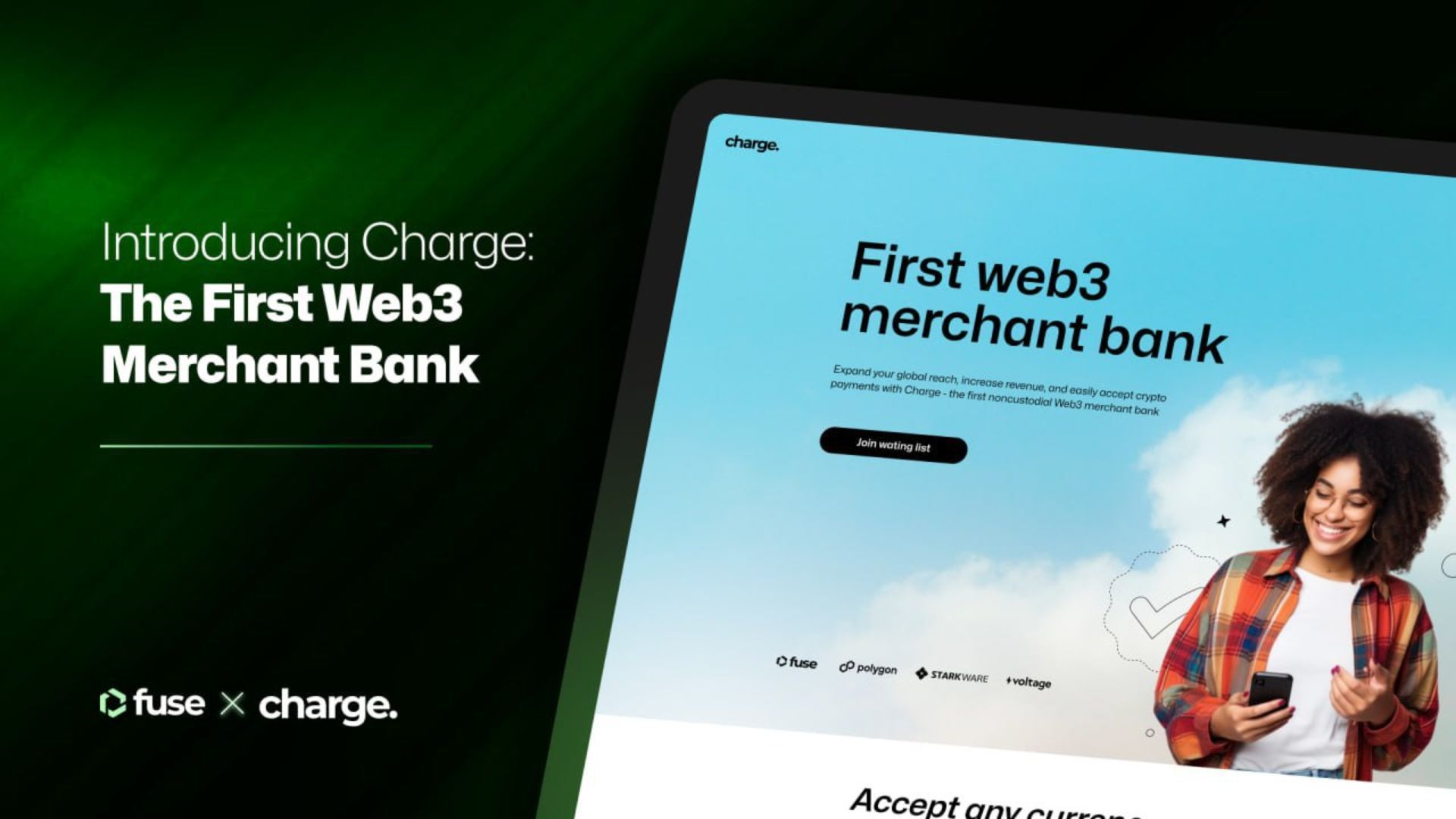-
Fuse unveils its premier Web 3 banking service, Charge.
-
The non-custodial bank offers a suite of services including payments, invoicing and fiat on-ramping.
-
Additional features include low transaction fees, borderless payments, and more.
Fuse, a layer 2 blockchain network that focuses on Web 3 payments for businesses and payments, announced the launch of its first non-custodial bank for merchants, Charge, aiming to revolutionize payment services in the ecosystem. Charge launches with a broad range of payment solutions for fiat and crypto, tailored for small and medium sized enterprises (SMEs). The bank will provide a full suite of services for Web 3-based businesses including fiat on/off ramping, invoicing, and payments.
Speaking on the launch of Charge, Fuse CEO Mark Smargon stated the advancing growth and innovation in Web 3 infrastructure and tooling is setting up a bigger market for digital banking, with Charge becoming the latest addition to this growing industry. The digital banking ecosystem is rivaling traditional banks (albeit still far off from replacing them), offering users neobank-tier products and services.
“Charge combines these innovations into a single platform that enables merchants to enjoy the benefits of non-custodial payments and invoicing, coupled with a fiat off-ramp for seamlessly moving assets to the traditional financial system,” Smargon further added.
What Does Charge Offer Customers?
Charge is a pioneer bank in the crypto and Web 3 space, aiming to offer new, improved payment systems to businesses and consumers. The merchant bank offers low transaction fees of 0.5%, enabling businesses to accept payments, generate invoices, and manage cross-border transactions. All these services are available on its non-custodial banking service, which is also a first in the space.
As Smargon iterated, the digital asset banking and payment system is growing at a fast pace, with newer generations heavily adopting crypto and digital assets. Notwithstanding, many businesses and consumers move to digital assets for their ease of use, especially in cross-border payments and ecommerce transactions.
However, the high fees, security concerns and lack of simple payment infrastructure have slowed this adoption. Charge aims to provide solutions to these challenges by offering a comprehensive, non-custodial solution that works seamlessly with existing fiat systems while leveraging Web3's flexibility.
Anticipating Growth In The Digital Banking Ecosystem
According to a Global Markets Insights report, the Web 3 payments market was valued at USD 9.64 billion in 2023 and is anticipated to reach a market size of over $94 billion in 2032, with a CAGR of over 28.5% between 2024 and 2032. Additionally, over 60% of businesses are showing a willingness to adopt crypto and digital assets payments if the process is made more secure and simplified.
With the launch of Charge, these targets can be easily reached, as they plan to build a vital product and important component of the blockchain payment industry.
The bank is designed with SMEs as the forefront consumers, making it easy for clients to not only enjoy the low transaction fees but also transact in multiple cryptocurrencies and fiat, removing barriers to international commerce. As a non-custodial payment solution, Charge does not require a banking license to operate. Clients retain full ownership of their assets at all times.
Charge will also provide a flexible and user-friendly banking service for these small and medium-sized businesses operating at the intersection of Web 2 and Web 3, including crypto startups and e-commerce stores. Users will receive full API support, enabling developers to fully integrate Charge into their existing tech stack. Robust security features will also empower Charge clients to maintain complete oversight and control of their assets.
The announcement also confirmed that Charge will launch a new business model by applying crypto-economics around merchant reputation and solving usability, privacy and trust issues preventing mainstream Web3 payments adoption.
Disclaimer: This article is provided for informational purposes only. It is not offered or intended to be used as legal, tax, investment, financial, or other advice.





